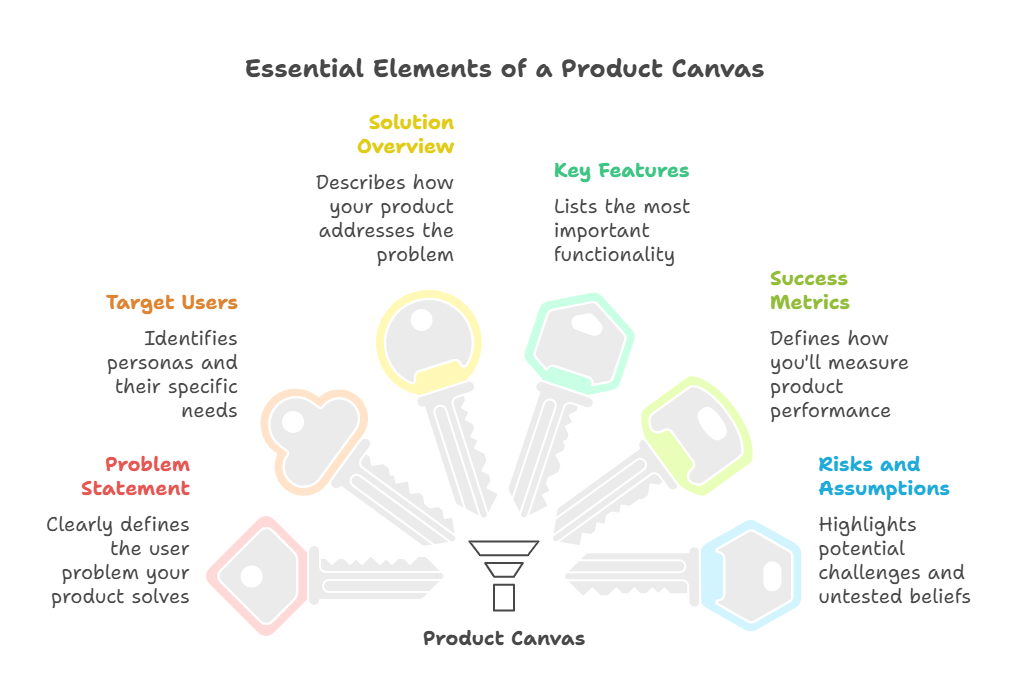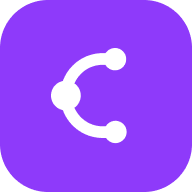What is a Product Canvas? Definition, Benefits & Examples
Learn how a product canvas helps teams align on product vision, features, and user needs in one collaborative framework for agile development.
What is a Product Canvas?
A product canvas is a simple, one-page tool that enables you to summarize all the key elements of a product and move from theory to Agile development. This collaborative framework combines Agile and UX principles by complementing user stories with personas, storyboards, and scenarios. Think of it as a strategic blueprint that helps product teams align on what they're building, why they're building it, and who they're building it for.
Unlike lengthy product requirement documents that can become outdated quickly, the product canvas provides a living document that evolves with your product. It follows lean and agile methodology's principles, making it perfect for fast-paced development environments where requirements frequently change.
Key Components of a Product Canvas
While product canvases can be customized for different teams and products, most include these essential elements:

- Problem statement: Clearly defines the user problem your product solves
- Target users: Identifies personas and their specific needs
- Solution overview: Describes how your product addresses the problem
- Key features: Lists the most important functionality
- Success metrics: Defines how you'll measure product performance
- Risks and assumptions: Highlights potential challenges and untested beliefs
The product canvas is a tool that succinctly describes your product, why you are creating it, who it is for, and its key components. This comprehensive view ensures everyone from developers to stakeholders understands the product vision and priorities.
Benefits of Using a Product Canvas
Product managers who implement product canvases report several significant advantages for their teams and processes.
Improved Team Alignment
The product canvas creates a shared understanding across all team members. When everyone references the same one-page document, it reduces miscommunication and ensures developers, designers, and stakeholders are working toward the same goals. This alignment is particularly valuable in cross-functional teams where different perspectives need to converge.
Faster Decision Making
With all critical information consolidated in one place, teams can make informed decisions more quickly. The canvas serves as a reference point during planning sessions and prioritization discussions, helping teams evaluate new ideas against established product goals and user needs.
Enhanced User Focus
A product canvas is a planning tool designed to help build products that have a great user experience by focusing on feature development that answers your users' needs. By keeping user problems and solutions at the center of the conversation, teams avoid building features that don't deliver real value.
How to Create Your Product Canvas
Building an effective product canvas doesn't require complex tools or extensive documentation. Follow these practical steps to create your first canvas.
Start with the Core Elements
Begin by filling out the fundamental sections: problem, users, and solution. These form the foundation of your product strategy and guide all subsequent decisions. Be specific about who your users are and what problems they're experiencing that your product will solve.
Collaborate with Your Team
The product canvas works best as a collaborative exercise. Involve team members from different disciplines to ensure all perspectives are represented. This collaborative approach helps identify blind spots and builds buy-in across the organization.
Keep It Simple and Visual
Remember that the product canvas is meant to be a simple, one-page summary. Use clear language and visual elements to make the information easily digestible. Avoid technical jargon that might confuse non-technical stakeholders.
Product Canvas in Practice
Many successful product teams have adopted the product canvas framework to streamline their development processes. Companies using this approach report better feature prioritization, clearer communication, and more user-centered products.
The framework is particularly effective for Agile teams working in sprints, as it provides constant context for development work without overwhelming detail. Teams can reference the canvas during sprint planning to ensure new work aligns with overall product goals.
Streamline Your Product Planning with ClipMind
If you're looking to create and organize your product canvases more effectively, consider using ClipMind, an AI-powered productivity platform for visual thinkers. Our tools help you structure complex product information into clear, actionable frameworks.
For teams working on new product ideas, our Product Idea Brainstormer can help generate and organize concepts before you build your canvas. And when you're ready to analyze your product's competitive landscape, the AI Competitor Analyzer provides valuable insights to inform your strategy.
The product canvas represents a shift toward more collaborative, user-focused product development. By consolidating essential information into a single, accessible format, it helps teams build better products faster while maintaining alignment across the organization. Whether you're a startup founder or product manager at an established company, incorporating this framework can transform how your team approaches product planning and execution.
 ClipMind
ClipMind